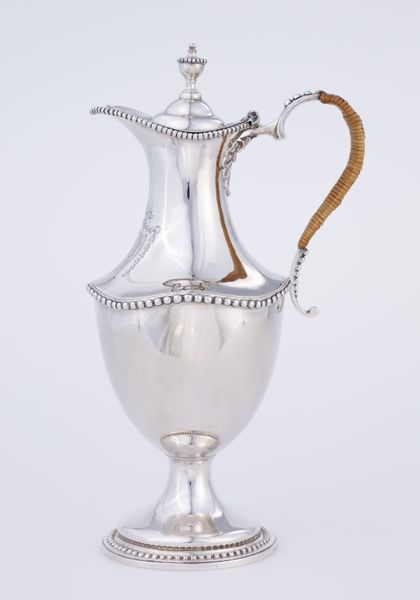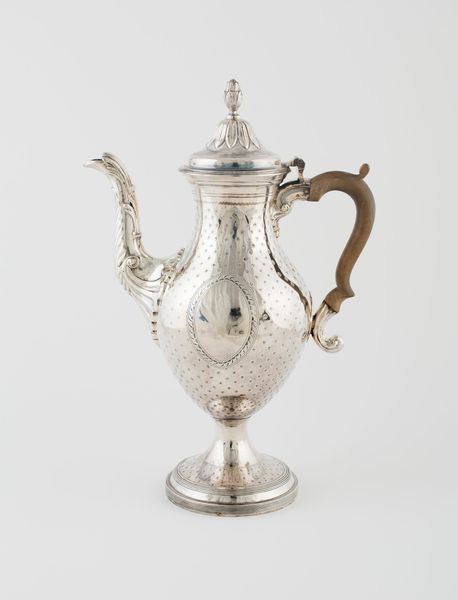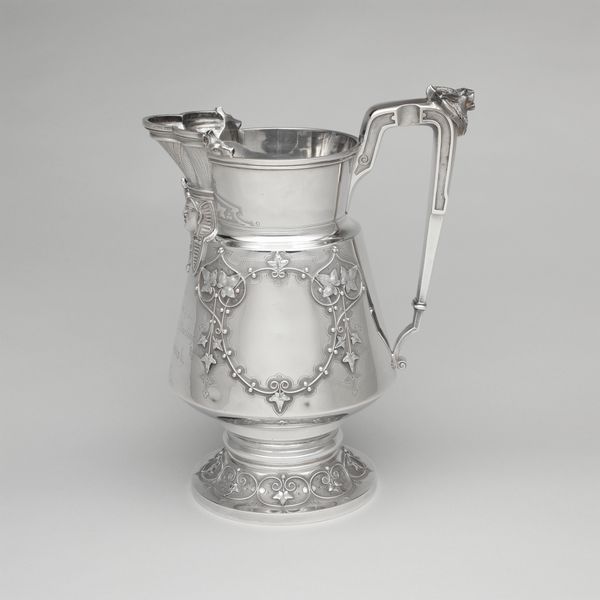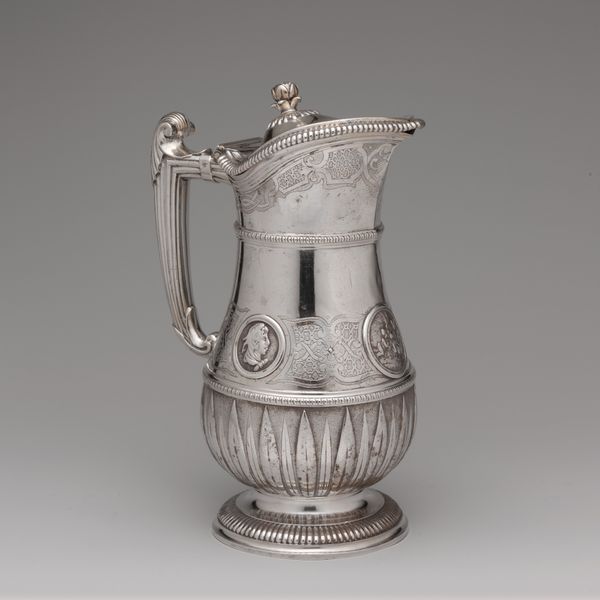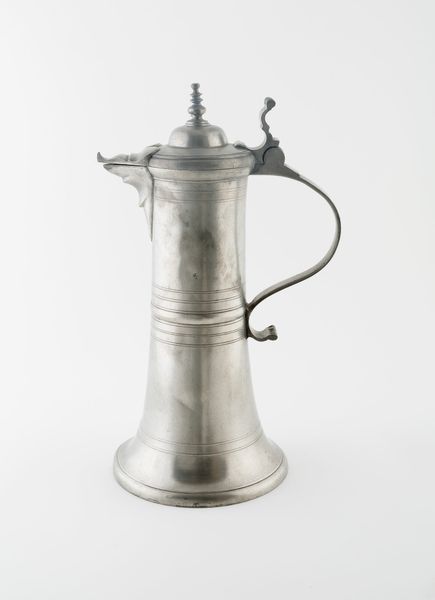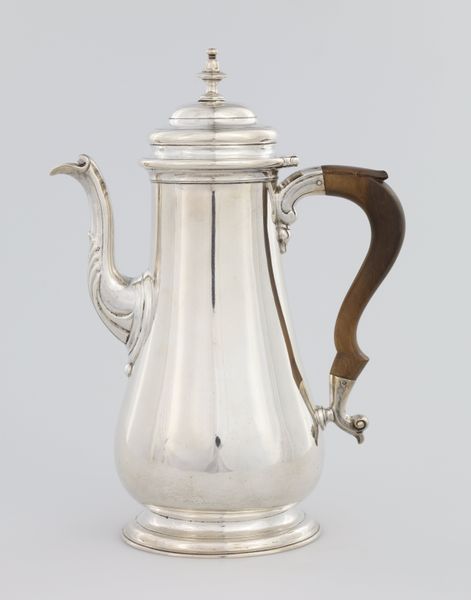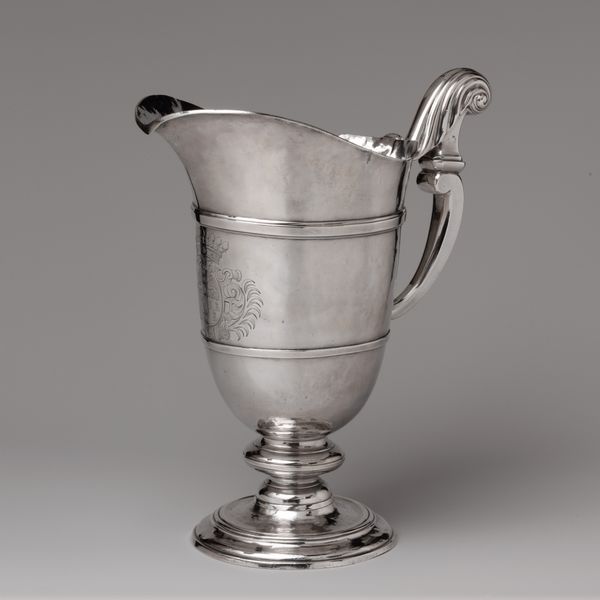
metal
#
baroque
#
metal
#
ceramic
#
decorative-art
Dimensions: 31.8 × 15.2 × 29.2 cm (12 1/2 × 6 × 11 1/2 in.)
Copyright: Public Domain
Curator: Here we have a Spouted Wine Flagon, dating back to approximately 1750, currently residing here at the Art Institute of Chicago. Editor: Immediately, it strikes me as severe yet refined. The pewter-like material gives it a rather austere, almost medieval feeling, doesn't it? Curator: Indeed. Considering the social history, these flagons weren't merely utilitarian; they reflected status. Displaying fine metalware signaled a certain level of affluence and sophistication in 18th-century society. It speaks volumes about the rituals and class structures surrounding alcohol consumption back then. Editor: Looking closer, it's clear this isn't a mass-produced item. The detailed tooling where the spout meets the body, the hinged lid – it all points to painstaking craftsmanship. I'm wondering about the workshops, the divisions of labor, and even the trade routes involved in sourcing the materials for such an object. Was this a collaborative endeavor, involving multiple artisans, or the singular work of a master craftsman? Curator: Excellent questions. Also, notice how the spout isn't just functional; its elaborate form enhances the flagon's visual appeal. It reflects the period’s engagement with decorative art and the value placed on aesthetics within everyday life, influencing dining habits and visual culture more broadly. The Baroque style shines through! Editor: Yes, the embellishments give clues, it humanizes the piece and tells me it's about joy and community, something for everyone in the local community, a shared item that wasn't only used in the castle! Curator: Precisely, its existence is a social text that reflects the exchange of goods and artistic skill during a transformative era, even impacting artistic style through material means. Editor: Exploring how pieces like this were crafted and who crafted them sheds light on so many corners of life back then; who got to dine and what status they enjoyed. Food for thought, quite literally. Curator: It underscores how art and utility blur in the world of design, connecting our material existence and collective past in quite profound ways.
Comments
No comments
Be the first to comment and join the conversation on the ultimate creative platform.
